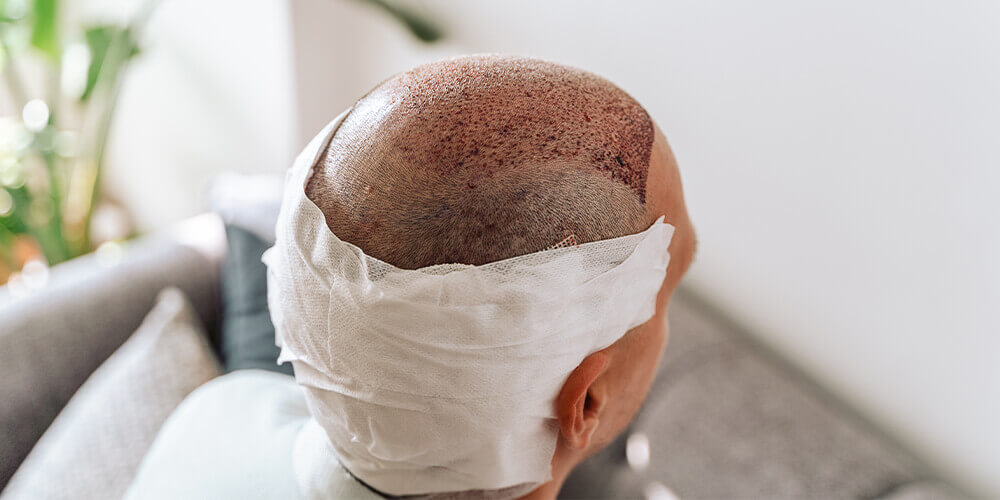Hair Transplant Side Effects: What to Expect
Hair transplant surgery is generally safe and effective, especially when performed by an experienced medical team. However, like any medical procedure, it can come with temporary side effects. Understanding what’s normal — and what’s not — will help you feel more prepared and confident in your hair restoration journey.
In this article, we’ll walk through the common, less common, and rare but serious side effects associated with hair transplants.

Common Side Effects
These are mild, temporary reactions that most patients experience after a hair transplant. They usually resolve on their own within a few days to weeks.
1. Swelling
Mild swelling around the forehead and eyes is common, especially within the first 2–5 days. It typically goes away on its own.
2. Redness and Itching
Redness in the donor and recipient areas is expected. Itching can occur as the scalp heals, especially as scabs form and fall off.
3. Scabbing and Crusting
Tiny scabs may form around each transplanted graft. This is part of the healing process. Avoid scratching or picking at them.
4. Temporary Shedding (Shock Loss)
Transplanted hairs may fall out within the first 2–4 weeks. This is normal — the hair follicles remain and will grow new hairs in the coming months.
5. Numbness or Tingling
Some patients report temporary numbness or a tingling sensation in the scalp. This usually fades within weeks or months as nerve endings heal.
Less Common Side Effects
While not experienced by everyone, these side effects are still relatively harmless and can be managed with proper care.
1. Folliculitis
This is a minor inflammation or infection of the hair follicles. It can appear as small red bumps or pimples, and is often treatable with warm compresses or topical antibiotics.
2. Bleeding or Oozing
Mild bleeding or fluid discharge can occur in the first 24–48 hours. If bleeding persists, consult your doctor.
3. Scarring
Linear scars may form in strip (FUT) procedures. In FUE, tiny dot scars may appear, but they are usually minimal and hidden by hair growth.
4. Prolonged Redness
For some patients, especially those with sensitive skin, redness in the recipient area may last longer — up to several weeks.
Rare but Serious Side Effects
These are uncommon, especially when treated by experienced professionals, but it’s important to be aware of them.
1. Infection
Though rare, infections can occur if the scalp isn’t kept clean or if post-op care is ignored. Signs include fever, pus, or severe pain.
2. Poor Graft Survival
If grafts are not properly placed or if post-op instructions are not followed, some may fail to grow. A skilled surgeon minimizes this risk.
3. Unnatural Hair Growth Pattern
Improper graft placement can result in hair that grows at the wrong angle or in unnatural directions. Choosing a reputable clinic helps prevent this.
4. Cysts
Occasionally, small cysts can form under the skin if hair follicles are buried. These are usually harmless and resolve on their own.
How to Reduce the Risk of Side Effects
Choose a certified and experienced clinic
Follow all aftercare instructions carefully
Avoid touching, scratching, or picking the scalp
Keep the scalp clean and dry as advised
Avoid smoking and alcohol during the healing period
When to Contact a Doctor
Contact your surgeon or clinic immediately if you notice:
Persistent pain or swelling beyond a few days
Signs of infection (pus, foul odor, fever)
Excessive bleeding
Severe allergic reactions or unexpected side effects
Final Thoughts
While a hair transplant is a safe and low-risk procedure, being informed about possible side effects helps you navigate the healing process with confidence. Most side effects are mild and temporary, and they can be minimized with proper care and guidance from your medical team.
If you’re considering a hair transplant, ask your clinic about their safety protocols, aftercare plan, and what you can expect based on your unique hair and scalp profile.
